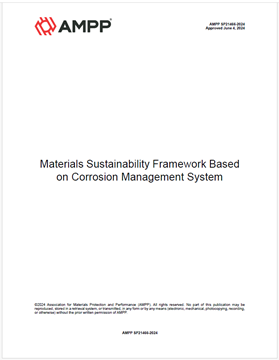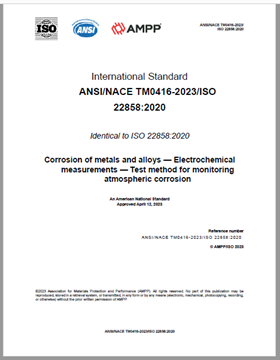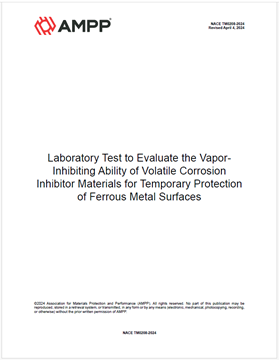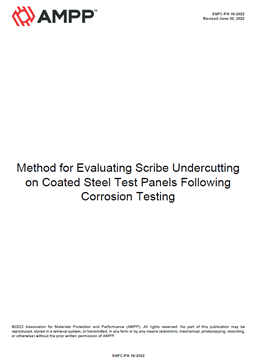Search
Products tagged with 'developed by sc 13'
View as
Sort by
Display
per page
AMPP SP21466-2024, Materials Sustainability Framework Based on Corrosion Management System
Product Number:
AMPP SP21466-2024
Publication Date:
2024
$109.00
ANSI/NACE TM0416-2023/ISO 22858:2020, Corrosion of metals and alloys — Electrochemical measurements — Test method for monitoring atmospheric corrosion
Product Number:
ANSI-NACE TM0416-2023-ISO 22858-2020
$149.00
NACE TM0208-2024, Laboratory Test to Evaluate the Vapor- Inhibiting Ability of Volatile Corrosion Inhibitor Materials for Temporary Protection of Ferrous Metal Surfaces
Product Number:
NACE TM0208-2024
Publication Date:
2024
$109.00
SSPC-PA 16-2022, Method for Evaluating Scribe Undercutting on Coated Steel Test Panels Following Corrosion Testing
Product Number:
SSPC-PA 16-2022
Publication Date:
2022
$109.00




